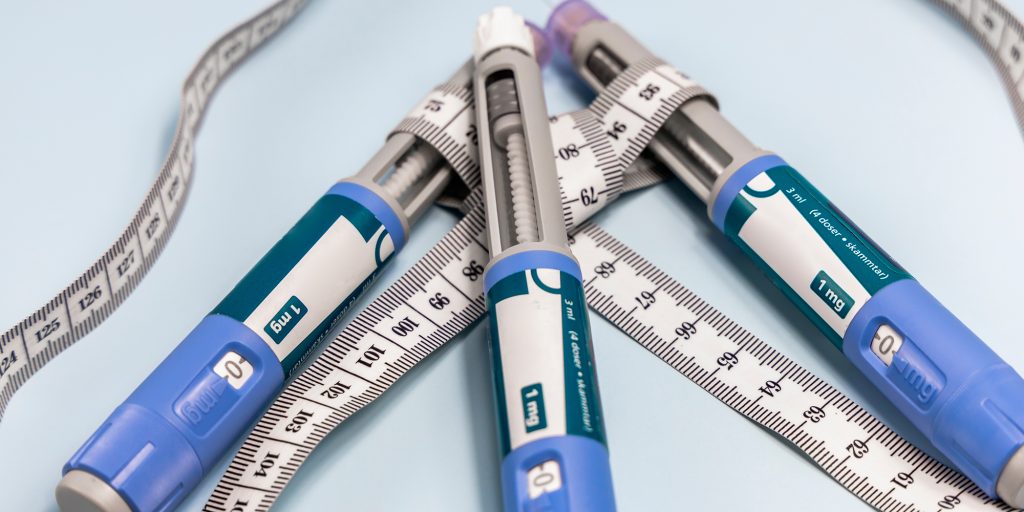Mounjaro (tirzepatide), Wegovy (semaglutide), and Ozempic (semaglutide) have emerged as revolutionary treatments for weight management and type 2 diabetes. These injectable medications belong to the GLP-1 receptor agonist class, with Mounjaro also acting on GIP receptors, making it a dual agonist. While these medications can help with weight loss and blood sugar control, they are also associated with various side effects. Understanding these potential side effects and learning how to manage them effectively is crucial for a successful treatment experience.
This guide provides an in-depth review of the known side effects of Mounjaro, Wegovy, and Ozempic, along with expert advice on managing them.
Common Side Effects and How to Manage Them
Nausea
Why it Happens: GLP-1 receptor agonists slow gastric emptying, which can lead to nausea, especially when starting treatment or increasing the dose.
Management Tips:
Eat smaller, more frequent meals to prevent overeating.
Avoid greasy, spicy, or highly processed foods.
Stay hydrated with small sips of water or ginger tea.
Take the injection at bedtime to sleep through the worst of the nausea.
Gradually increase your dosage as prescribed to allow your body to adjust.
Vomiting
Why it Happens: A more severe response to slowed digestion and nausea.
Management Tips:
If vomiting is severe, speak to your healthcare provider about adjusting the dose or switching to a different medication.
Use anti-nausea remedies like peppermint tea or electrolyte solutions.
Avoid heavy meals, and eat bland, easy-to-digest foods like rice, bananas, and toast.
Diarrhea
Why it Happens: The medication alters gut motility and digestion.
Management Tips:
Stay hydrated with electrolyte-rich drinks.
Reduce intake of high-fiber and fatty foods.
Avoid caffeine and alcohol, which can worsen diarrhea.
If diarrhea persists, consult your healthcare provider.
Constipation
Why it Happens: The slowed gastric emptying can result in infrequent or difficult bowel movements.
Management Tips:
Increase fiber intake through vegetables, whole grains, and fruits.
Drink plenty of water (at least 6-8 glasses per day).
Exercise regularly to stimulate digestion.
Use a mild laxative if recommended by a healthcare provider.
Abdominal Pain
Why it Happens: Slowed digestion and changes in gut motility may cause cramping and discomfort.
Management Tips:
Eat slowly and chew food thoroughly.
Apply a warm compress to your abdomen.
Engage in light physical activity to help digestion.
Avoid carbonated drinks, which can cause bloating.
Fatigue
Why it Happens: The medication affects glucose metabolism, which may temporarily cause fatigue.
Management Tips:
Get plenty of rest and ensure you sleep well.
Maintain stable blood sugar levels by eating balanced meals.
Stay hydrated and incorporate light exercise into your routine.
If fatigue persists, discuss alternative treatment options with your doctor.
Injection Site Reactions
Why it Happens: Some people experience redness, swelling, or itching at the injection site.
Management Tips:
Rotate injection sites to prevent irritation.
Use a clean, alcohol-swabbed area before injecting.
Apply a cold compress after injection if irritation occurs.
If the reaction is severe, consult a healthcare provider.
Serious but Rare Side Effects
Pancreatitis
Symptoms: Severe abdominal pain that radiates to the back, nausea, vomiting, fever.
What to Do: Seek immediate medical attention if you suspect pancreatitis. Your doctor may discontinue the medication.
Gallbladder Issues
Symptoms: Intense stomach pain, yellowing of the skin (jaundice), nausea, vomiting.
What to Do: Contact your doctor if you experience these symptoms, as gallbladder problems may require medical intervention.
Thyroid Tumors (Rare but Possible Risk)
GLP-1 receptor agonists, including Wegovy, Ozempic, and Mounjaro, carry a warning about potential thyroid C-cell tumors, based on animal studies.
What to Do:
Regularly monitor for symptoms such as a lump in the neck, difficulty swallowing, or persistent hoarseness.
If you have a family history of thyroid cancer or Multiple Endocrine Neoplasia syndrome type 2 (MEN 2), discuss alternative treatments with your doctor.
Kidney Problems
Symptoms: Reduced urination, swelling in the legs and feet, fatigue.
What to Do: Stay hydrated and consult your doctor if you notice symptoms of kidney impairment.
Depression and Mood Changes
Symptoms: Persistent sadness, anxiety, suicidal thoughts.
What to Do: If you experience mental health concerns, reach out to a healthcare provider for support.
Who Should Avoid These Medications? You should avoid Mounjaro, Wegovy, and Ozempic if you the following:
Have a personal or family history of medullary thyroid carcinoma (MTC).
Have Multiple Endocrine Neoplasia syndrome type 2 (MEN 2).
Have a history of severe pancreatitis.
Have severe kidney or gallbladder disease.
Are pregnant or breastfeeding (safety data is lacking).
How to Minimize Side Effects When Starting Treatment
Start with the lowest dose and increase gradually as directed by your doctor.
Take injections at the same time each week to maintain consistent drug levels.
Monitor your body’s response, keeping track of symptoms and triggers.
Stay hydrated and eat a nutrient-rich diet to support overall well-being.
Communicate with your healthcare provider about any concerning symptoms.
Mounjaro, Wegovy, and Ozempic are highly effective medications for weight loss and blood sugar control, but they come with potential side effects. Understanding how to manage these side effects can enhance your experience and treatment success. If you encounter persistent or severe reactions, consulting a healthcare provider is essential to ensure your safety and well-being.
By following expert recommendations, maintaining a healthy lifestyle, and staying in touch with your doctor, you can optimize the benefits of these treatments while minimizing discomfort.



